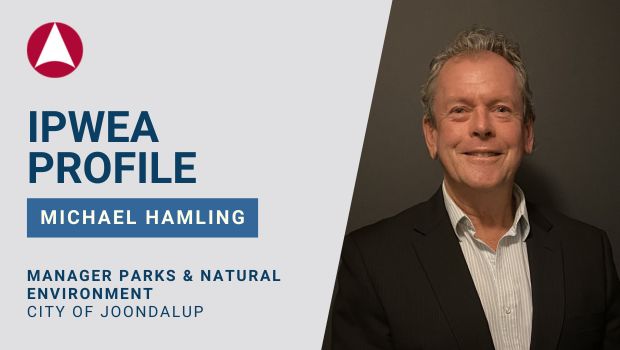Joondalup in Western Australia is a planned city created in 1998, but those original plans were not able to completely factor in the advancing impact of climate change.
The city has many attractions and advantages. With a diverse population over 169,000 it is situated approximately 30 kms to the north of the Perth CBD and is linked by rail and freeway transport, is adjacent to a pristine coastline, and is home to significant institutions such as the Edith Cowan University.
Michael Hamling, the Manager of Parks and Natural Environment at the City of Joondalup, says two of the major climate related challenges the city has faced in recent years are in creating a protective tree canopy, and in conserving its ground water allocation.
Its response to these challenges was given international recognition recently with the city winning the Living Green for Water category at the 2024 International Association of Horticultural Producers (AIPH) World Green City Awards.
Joondalup also picked up the inaugural AIPH Youth Award for its efforts in involving young people in its Climate Change Strategy and Strategic Community Plan.
“We have 588 hectares of parks and they are irrigated with bore water from the Gnangarra Mound superficial aquifer,” said Hamling.
“There’s a wealth of water sitting underneath us, and in the past, it has also been used for agriculture and industry.
“Some of that use in the past could be seen as unsustainable by today’s standards. In addressing the issue, the State Government instigated a licensing requirement and issued a water allocation based on those licenses. We are only allowed to extract a certain amount of water out of the ground annually”
Pressure on this ground water supply has also come from the need to also use it as a source for drinking water due to Perth’s diminishing average rainfall and low dam levels.
“The result is that we’ve had to put some innovative practices into place so we can sustain our parks and the lifestyle they deliver,” said Hamling.
The response has included several strategies such as understanding the water requirements to sustain turf for ‘active’ and ‘passive’ use.
Sporting fields, for example, are considered ‘active’ and they receive more water to sustain the higher use than ‘passive’ areas which don’t see as much use, many of which are now hydrozoned (different watering regimes based on useage) and ecozoned (landscaped with native shrubs which don’t require on going watering to survive).
“We have 370 parks, and we are progressively working through high water use parks and reducing the amount of water that we need through capital investment,’ said Hamling.
“These works can reduce the amount of water we would normally use in a park by 25% to 30%.”
Hamling and his team have also installed weather stations to monitor conditions across the city area.
“Joondalup is relatively long and narrow so a rain event at one end of the City can be quite different to the rain event at the other end 17 kilometres away,” he said.
“We have installed three weather stations, and they feed climatic information through to a central controller which calculates the evapotranspiration requirements for the day and sends the data out to the individual reserves and adjust the watering times, factoring in all weather conditions such as humidity and wind and so on.
“This means that you might water an area for 30 minutes one day but only 10 minutes the next day to sustain optimum growth.”
The City is also in the process of implementing automated water metering for key assets, which will remove the need for irrigation staff to visit locations to record data on their tablet devices.
Ultimately, this will be aggregated into a central system which will respond to the data and automate watering, delivering more optimal results for the parks and ensuring more efficient management of the water resource.
At the same time, Joondalup has embarked on a significant tree planting program to improve the city’s shade canopy and minimise the heat island effect.
Hamling says the program was launched in 2017 and has so far seen 6800 trees planted along the City’s arterial and distributor roads, with planting locations informed by data from heat maps.
“We have two other tree planting programs where the residents can request a tree and another where staff find locations within the parks and streetscapes, since 2017 this has resulted in a further 10,000 trees being planted,” he said.
“We had a fairly low canopy cover of 9% when we started and we now at 12%, so we’re making headway, and that will get exponentially quicker as the trees mature.”
These projects come naturally to Hamling, whose descendants had the first flower nursery in Perth located near the Perth Central Train Station.
“I studied horticulture and really enjoyed that, so that’s a passion which goes way back,” he said.
“But I’ve been involved in local government for 40 years and I really enjoy looking at the bigger picture, and that includes development and design, managing programs and staff, and driving organizational change.
“I like putting it all together from inception to the grave if you like, and I really get a kick out of seeing the public utilising a previously undervalued space for recreation purposes. It’s the legacy we leave for future generations which has really satisfied me over the journey so far.”














